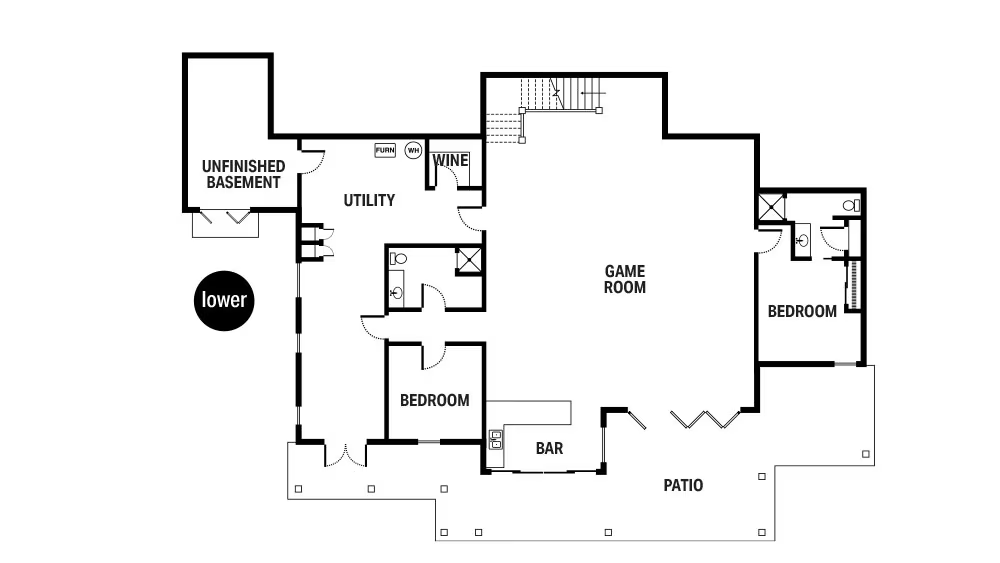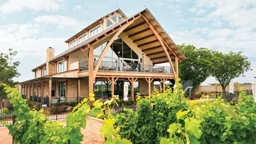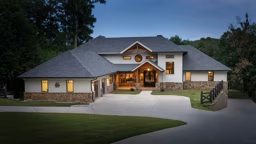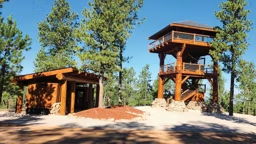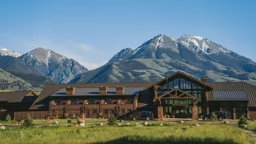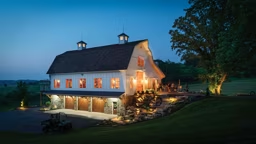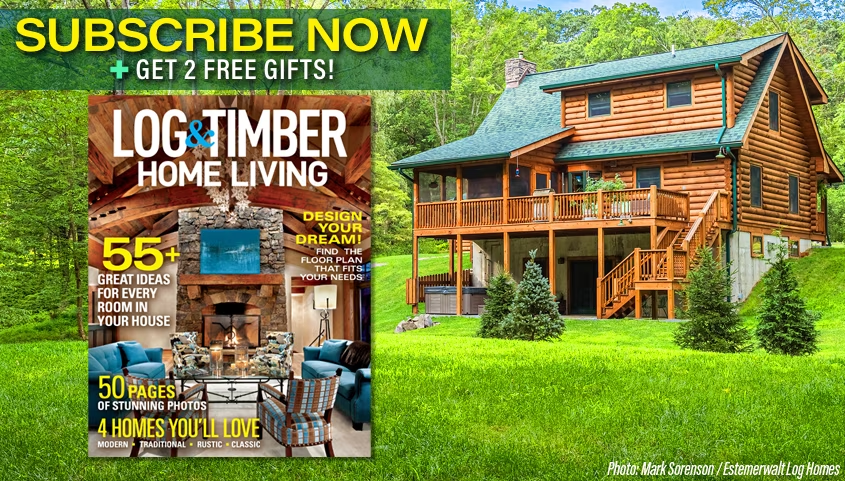Photography by Garey Gomez
No homeowner goes into the building process wanting to squander resources — be it time, energy or money. But some take a particularly staunch stand against it. Such is the story of one home on the shores of Lake Lanier in Georgia. Saving money, materials and energy are the trifecta of smart home building, and this one nails them all.
But the accolades don’t end there. The home also scores high marks for its stand-out style. Designed as a full-time residence for well-traveled owners, the home takes its inspiration from across the globe. “The owners had spent some time in Japan and also Germany — two countries with a storied timber frame tradition,” explains David Shirley, lead architect for the home’s timber provider, New Energy Works. “They really wanted to showcase things they had seen in their travels.”
The contemporary structure gives off that energy at first glance. For starters, the Douglas fir timbers at the home’s entrance were made to resemble a traditional torii gate (typically found at the entrance to shrines), while the moody, charcoal exterior is comprised of Japanese Cyprus from Nakamoto Forestry treated with the shou sugi ban method. This ancient Japanese technique of preserving wood by charring the surface with fire allows it to last upwards of a century. “Because there is no moisture left in the wood, it is more resistant to rot,” explains David. “It’s a one-and-done.”
Reducing long-term energy consumption also factored high on the couple’s priority list. To this end, New Energy Works used structural insulated panels (SIPs) on the walls and roof enclosure around the Douglas fir framing. They also included a 2 1/2-inch service cavity inside the exterior wall for running the wiring and outlets. “One of the main places you lose energy is in the outlets, so the service cavity creates an interior air barrier, so the infiltration rate is extremely low,” explains David. “It’s a well-insulated house that keeps the energy where you want it.”
Other factors that help reduce material waste (and hands-on maintenance time) are the standing-seam metal roof, reclaimed wood and leftover timber cuttings used for decorative applications throughout the interiors, and the locally quarried stone, which wraps around the home’s foundation and lower level.
The walk-out basement, itself, is a testament to the resource-driven mentality that spurred the building process. By carving out a lower level into their sloped property, the owners nearly doubled the home’s livable square footage with minimal impact to the budget. “There are a lot of efficiencies in building a walk-out basement because you need the foundation anyway,” David shares.
Showing off their smart design chops, the homeowners chose to limit the footprint on the main floor so that they could splurge on what really mattered to them: a unique design and quality finishes. “It was a matter of economics,” explains David. “Everybody has a budget. You just have to decide what is most important to you.”
In addition to wanting a compact but open floor plan that delivered water views throughout (a fairly common ask), the couple also had an unusual design request in mind: They wanted the core of the home to mimic a lantern so that it could serve as a welcoming beacon to all of their guests.
To meet this criteria, New Energy Works elevated the ceilings of the open kitchen, living and dining area and surrounded it with clerestory windows, flooding the interiors with natural light during the day and creating a glowing effect in the evenings. This airy-by-day, glowing-by-night aesthetic suits the upper level’s refined and polished style, which is dominated by clean lines and warm, fine-finished woods, including black walnut and white oak. In contrast, the lower level feels decidedly industrial. “We used a type of timber framing with a rough finish, large bolts, concrete walls and exposed metal conduit to achieve that industrial feel,” says David of the basement. Creating the yin-and-yang of the two levels was one of his favorite parts of the build. “They really pushed us to define those two distinct looks,” he says.
With the home completed in 2021, the owners have had time to enjoy the signature style of their interiors and reap the benefits of their resourceful building approach — namely, less upkeep and lower energy bills. David shares that he recently received a message from the owners relaying how much they are still enjoying their home. “Sometimes we try things on paper and they don’t pan out,” he says. “But to get that kind of feedback years later shows how truly special this project is.”
Home Details
Square Footage: 3,000
Bedrooms: 4
Baths: 4 full, 1 half
Design/Timber Frame: New Energy Works












